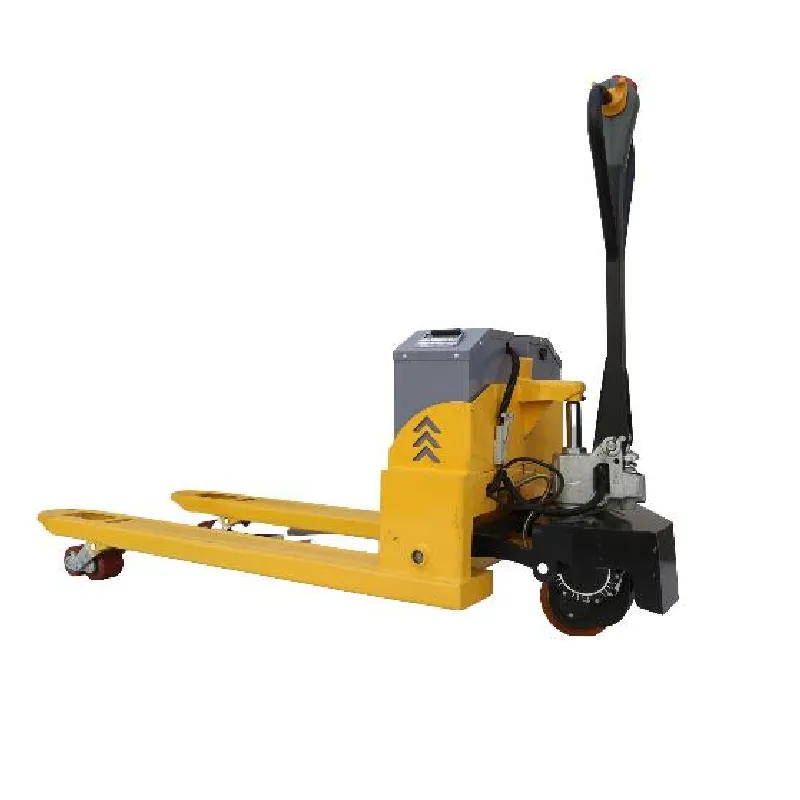


Understanding Pallet Jacks Essential Tools for Warehousing and Logistics
Pallet jacks, also known as pallet trucks or pump trucks, are essential tools widely used in warehouses, factories, and other industrial environments. They are designed to lift and move palletized loads efficiently, simplifying material handling and enhancing productivity. This article delves into the functionality, types, and advantages of pallet jacks, as well as best practices for their use.
Functionality of Pallet Jacks
A pallet jack consists of a hydraulic jack mechanism, two forks, and a handle. The forks are inserted into the open bottom of a pallet, and when the handle is pumped up and down, the hydraulic system raises the pallet off the ground. The user can then maneuver the loaded pallet by pushing or pulling the jack. The simple design of the pallet jack makes it easy for operators to lift heavy loads with minimal effort. Most pallet jacks have a lifting capacity ranging from 2,000 to 5,500 pounds, although heavy-duty models are available for larger loads.
Types of Pallet Jacks
1. Manual Pallet Jacks These are the most common type, operated by hand. They require the user to pump the handle to lift the load and steer it manually. Manual pallet jacks are economical and ideal for short distances and moderate lifting tasks.
2. Electric Pallet Jacks Also known as electric pallet trucks, these models use battery power to lift and move loads. They are suitable for larger warehouses and longer distances, significantly reducing the physical strain on the operator. Electric pallet jacks often feature easier maneuverability and can handle heavier loads than their manual counterparts.
3. High-Profile Pallet Jacks These specialized jacks are designed to handle larger pallets that are at a higher elevation. They are useful in specific industries where standard pallet heights may not be sufficient.
4. Pallet Stackers A type of electric pallet jack that can not only move pallets but also stack them vertically. They are excellent for maximizing vertical storage space in warehouses.
Advantages of Using Pallet Jacks
- Enhanced Efficiency By simplifying the process of moving heavy goods, pallet jacks increase overall operational efficiency. Employees can handle more pallets in less time, reducing labor costs and speeding up the workflow.

- Versatility Pallet jacks can be used in a variety of settings, from small retail spaces to large warehouses. Their adaptability allows them to handle different types of loads and pallets.
- Cost-Effective Compared to other material handling equipment such as forklifts, pallet jacks are relatively inexpensive. Their lower upfront cost and maintenance requirements make them an attractive option for businesses operating within tight budgets.
- Safety Properly used, pallet jacks can help prevent workplace injuries associated with lifting heavy loads
. The ergonomic design promotes safe handling and reduces the risk of strains and sprains.Best Practices for Using Pallet Jacks
1. Inspect Before Use Always check the pallet jack for any mechanical issues or signs of wear, such as hydraulic leaks or damage to the forks.
2. Follow Weight Limits Never exceed the specified weight capacity of the pallet jack to ensure safe operation and avoid damaging the equipment.
3. Clear Pathways Ensure that pathways are clear of obstacles before moving pallets to prevent accidents.
4. Proper Handling Techniques Always bend at the knees and keep your back straight while lifting. Use the handle to push or pull rather than twisting your body.
5. Training Provide adequate training for operators to ensure they know how to use pallet jacks safely and effectively.
In conclusion, pallet jacks are crucial to modern warehousing and logistics operations. Understanding their types, advantages, and proper usage can significantly enhance productivity and ensure a safer working environment. Investing in high-quality pallet jacks and training employees on their effective use can lead to long-term benefits for any business involved in material handling.



